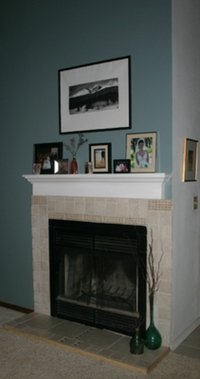





As gardeners we want what we want, which is generally every plant we come across. As a result, indoor gardeners often end up with a plant on every surface, sill and shelf in their homes. While this look is probably fine in our eyes, it might not strike the fancy of our spouses, house guests, and likely won?t win us any decorating awards. If you would describe yourself as ?decorating dumb? or even just need a few pointers, here are a few tips for making that Schefflera look like it was born to sit next to that couch:
(Editor's Note: This article was originally published on October 5, 2007. Your comments are welcome, but please be aware that authors of previously published articles may not be able to promptly respond to new questions or comments.)
Use Time-Honored Decorating Rules
Clutter is never a good thing. Less is more. Choosing just a few houseplants for your home is almost certainly out of the question for gardeners. But choosing wisely and with a certain intention in mind will guarantee that your houseplants will look stylish and not chaotic.
Decorative plant stands are a good choice to keep clutter at a minimum if you can find one that fits your room’s style. If you must put multiple plants on a stand, try to keep the pots the same or color coordinated. As a general rule, you want the plant, not the stand, to be the focal point. More on what to do with the plants you just aren’t going to part with a little later.
Each room in your home needs a focal point. Large, well established plants can create a wonderful, warm focal point for a room. For this rule you can have fun; a bonsai specimen can be just as much of a conversation piece as a large parlor palm. On the other hand, don’t make your vast collection of African violets, though impressive, the focal point of your living room.
Each room in your home needs contrasting colors, tones, and textures. Not only can you have fun with the color of the pot you use, but there are a multitude of leaf color and textures to brighten up or add contrast. Think Ming Aralia, Croton, Zebra Plant, or Philodendron “Black Cardinal.” Try to use color and textures to branch out your thinking about what a houseplant “has” to be.
Another good way to bring texture into a room is to use dried botanical material. Curly willow and dried grasses are an excellent way to add interest to a dull corner or add a modern touch to your décor.

Each room in your home needs height to draw the eye up and around the room. Whether you have a hanging basket in the corner of the room or a free standing pot, plants can provide the height needed to satisfy this rule. Just to name a few, Red-margined Dracaena, Shefflera, and Hawaiian Ti Plant are some perfect plants to add height. Make sure that when you use a tall plant, the pot is well-balance (read: big enough) to the size of the plant and the space.
Make a plant room:
Since most houseplant lovers will never be able to pare down their collections enough to only have one or two plants in each room, a good solution for this problem is to create a plant room.
Hopefully this room can be less traveled by family members and animals (for the protection of your plants and to create a sanctuary for you). You should be able to shut this room off from guests, like a spare bedroom, basement, or a garage corner. Once you create a specific place for all your houseplants, then you can keep as many as you like! You can be organized or messy; you can have grow lights or completely cover up all the windows in the room. The best part about a plant room is that you can keep those “crazy plant person” rumors to a minimum as you’re hiding most of the evidence. Expectantly, this room will help you keep the houseplant clutter in the rest of your home under control.
Keep both your own and the plant’s needs in mind
Try to balance the gardener and the decorator in you when you are choosing and placing houseplants. It is possible to find a spot where a plant is happy and compliments the décor of your home. A big, bushy peace lily might be happy on the window ledge, but may dim the light to your room, making it look smaller. Likewise, a pot of ivy might look fantastic on your windowless-basement shelf, but it probably won’t ever thrive there. Try to make a compromise and both sides of your brain will be happier.
Experiment and Rearrange!
You will know when your home is finally decorated the way you want it. The best way to find the best look is to experiment. Rearrange furniture and plants often. If moving a bulky sofa is out of the question, try shifting lamps and artwork on the wall along with your houseplants.
Try this month: Pick a room in your house and move a houseplant to a different spot every week for a month. You will start to notice where both you and the plant respond best to the placement. Maybe you will end up with an arrangement you would have never thought of otherwise!
Copyright © www.100flowers.win Botanic Garden All Rights Reserved